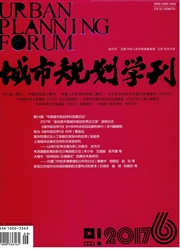

 中文摘要:
中文摘要:
以解构增长主义主导下的城市空间增长现实境况为研究背景,针对当前城市空间增长的设定路径在应对生态服务功能的确定性和偶然扰动的不确定性方面所扮演的双重“被动防御”角色,通过韧性与绿色基础设施的概念结合,重构基于绿色基础设施设定城市空间增长的韧性进程:将绿色基础设施视作城市空间增长刚性约束的绝对前提;在此基础上,根据城市空间增长同生态服务功能的适应状况,提供多种弹性引导的空间选择而非限制选择,以此实现“刚性约束同弹性引导的共轭协同”这一空间管控的核心目标,并促使已有设定路径由“被动防御”向“主动反制”的角色转变。基于上述理论框架,组合绿色基础设施评价与最小累积阻力建构GIA—MCR城市空间增长模型,诠释“刚性约束同弹性引导的共轭协同”在技术方法层面的具体落实。杭州的应用研究表明:由该模型设定的城市空间增长能够精准避开中高生态服务功能区域、有序引导城市开发在适宜空间范围内展开;该模型可辅助城市开发边界等空间管控的规划决策支持并配套相应政策工具,以此建立以“空间一张图”为核心的城市空间增长实施管理体系。
 英文摘要:
英文摘要:
The rapid urban sprawl and expansion in China have caused serious problems. Among these, the most urgent issues are ecological environment deterio- ration and imbalance of land supply and demand. It is imperative that the conventional mode of urbanization should be transformed. However, urban growth management plays a passive role in coping with uncertainty and maintaining ecosystem services. It is necessary to integrate green infrastructure into the urban resilience framework and fill the gap in urban growth management. At the technical level, green infrastructure assessment (GIA) is combined with minimum cumulative resistance (MCR) to create the GIA-MCR spatial model. Finally, a case of Hangzhou shows that the scenarios obtained by GIA-MCR spatial model can effectively avoid the occupation of ecologically sensitive areas, which could promote a compact and contiguous development pattern. Secondly, the model can be used to delineatethe path of urban growth boundaries.
 同期刊论文项目
同期刊论文项目
 同项目期刊论文
同项目期刊论文
 期刊信息
期刊信息
